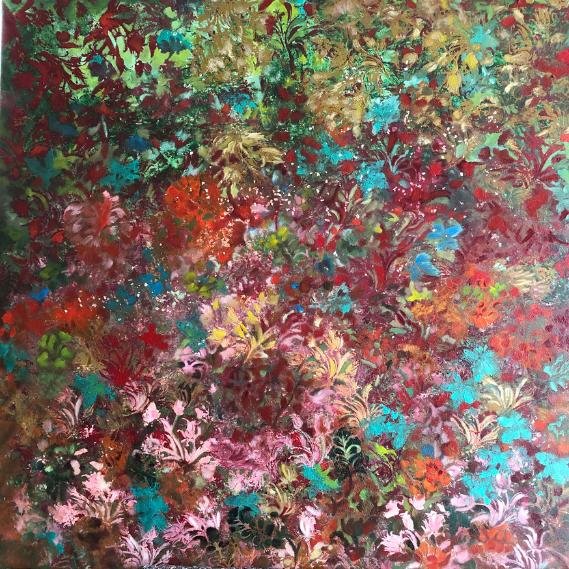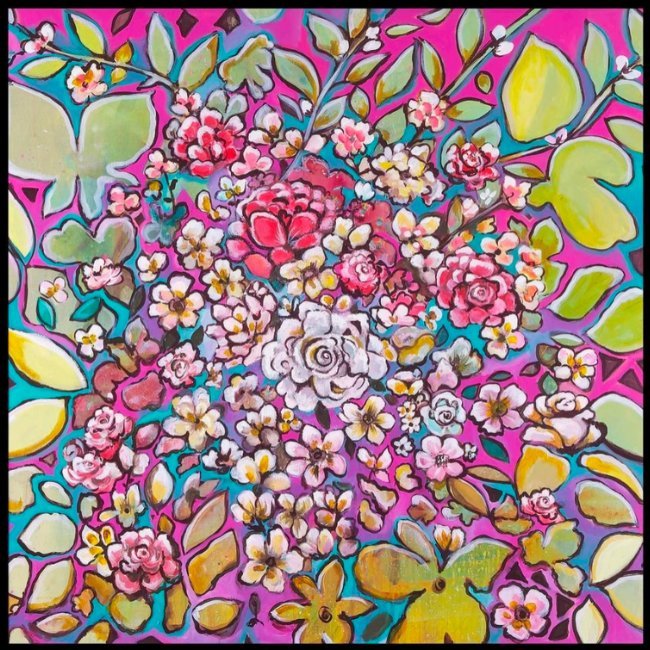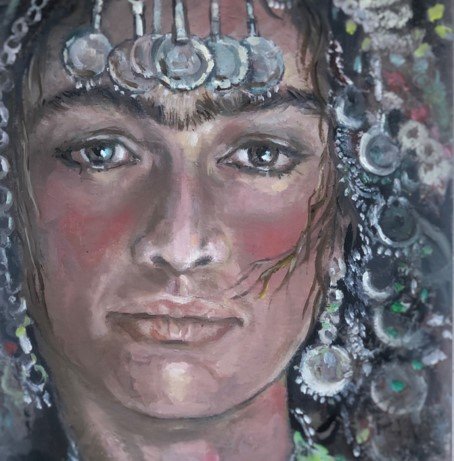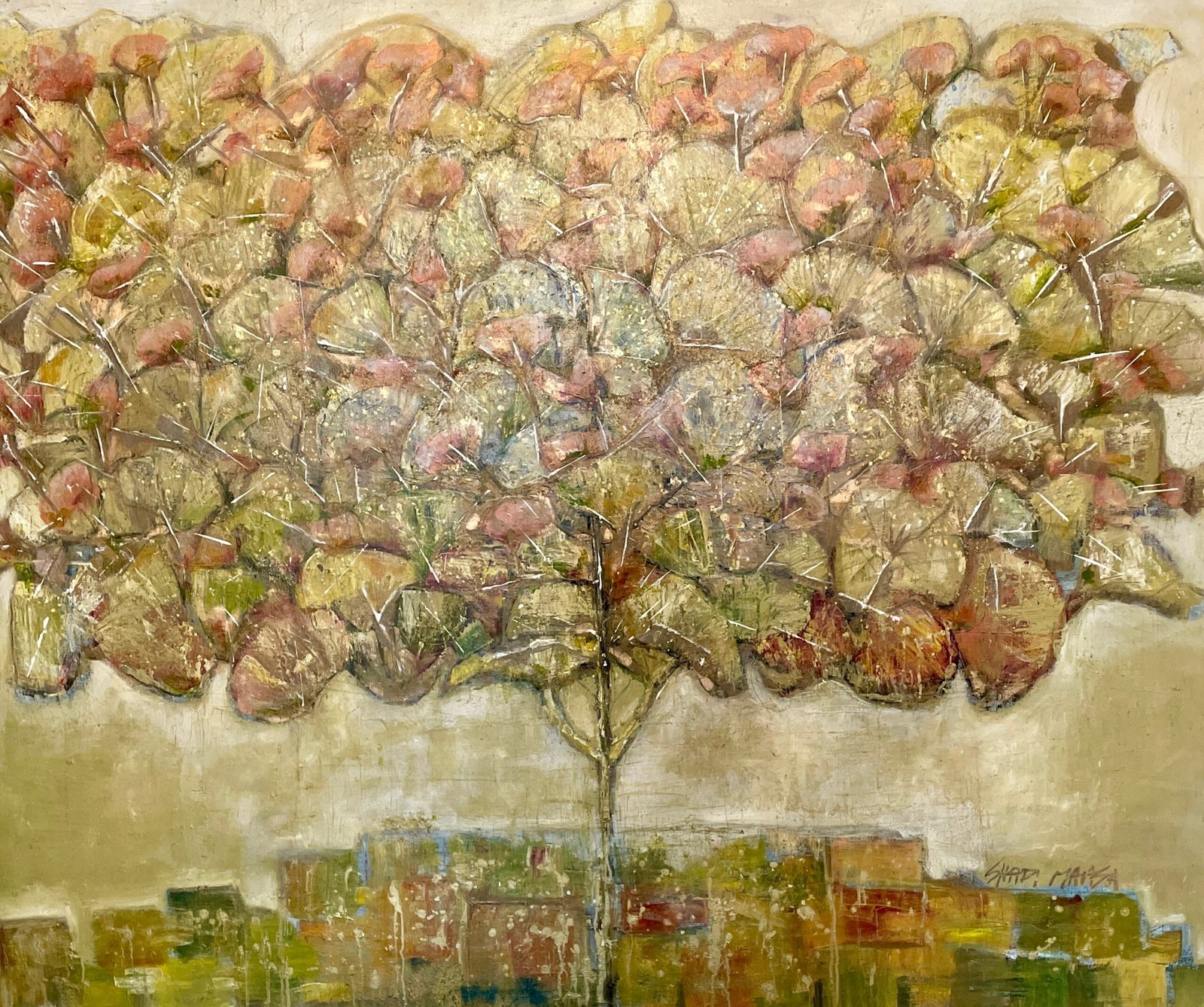
Artist Shadi Mahsa uses oil, acrylic, and watercolor paints to express her creativity. Each medium has its own unique qualities that influence her exploration of nature, human emotions, and intricate patterns. By understanding the specific characteristics of each technique, she can effectively convey her artistic vision.
Oil vs Acrylic vs Watercolor—a comparison that unveils the soul of her artistic process. By delving into the characteristics that define each medium, we uncover what makes them unique and how they shape her preferences. Whether it’s the slow-drying elegance of oil or the rapid versatility of acrylic, each choice reflects a different facet of her creative vision.
In this article, we will delve into these painting mediums and explore how they contribute to Shadi Mahsa’s captivating artistry.
Shadi Mahsa, born in Tehran, combines her ancestral tradition with contemporary curiosity in her art. She holds an MA in Fine Art from Chelsea University of Art, London, and an HNC in Fine Art from Kensington Chelsea College, which provides her with a strong technical and conceptual foundation.
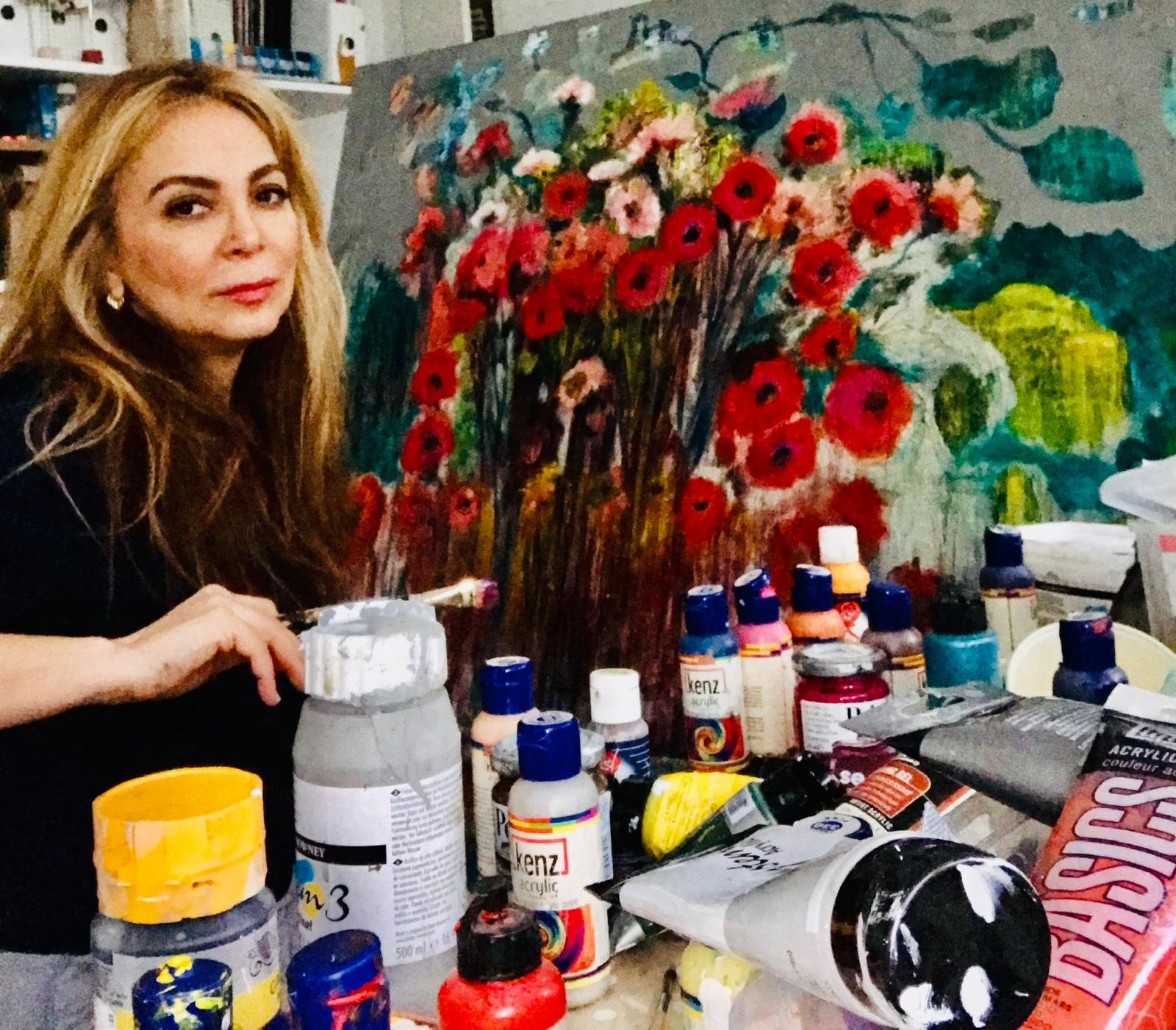
Persian art influence runs like a thread through her work: intricate motifs, calligraphic lines, and luminous color palettes echo the visual poetry of her heritage. This connection to Persian philosophy manifests not only in aesthetic choices but also in the meditative repetition and reverence for complexity found within her canvases.
A fascination with chaos theory in art propels her gaze toward nature’s tangled order. Fractals, self-similarity, and organic patterns become both subject and structure—whorls of paint mimicking the restless geometry of leaves or rivers. The unpredictable logic of chaos intertwines with conscious intent, inviting viewers to witness harmony emerging from apparent disorder.
Medium choice becomes an act of translation: oil for its depth mirrors the soulful vastness she seeks in portraiture; watercolor channels fluidity reminiscent of fractal streams; acrylic’s immediacy echoes the vibrant pulse of wall-sized abstractions such as “Farideh”, part of her A women with a thousand faces series. Each pigment carries forward her quest—to render visible the concealed rhythms binding nature, culture, and emotion.
Her artworks, like the abstract oil painting Hope, reflect a balance between disorder and harmony, drawing from chaos theory in nature. Moreover, Shadi offers bespoke art commissions tailored to individual needs, allowing clients to transform their vision into art.
There are three main types of painting mediums: oil, acrylic, and watercolor. Each of these mediums has its own unique qualities that influence how artists work and tell stories through their art.
Each medium has its own unique qualities that influence how artists work and tell stories through their art.
The slow drying time of oil paints allows for a careful approach where each stroke can be refined to achieve unparalleled detail. This characteristic is crucial in creating soulful portraiture that resonates with depth and emotion, as it permits the artist to blend colors seamlessly and craft subtle transitions.
The rich texture and deep luminous colors of oil paint are perfect for capturing the vibrancy of landscapes and the intricate nuances of human expressions. These qualities bring life to the canvas, making each piece a vivid narrative of its own. Shadi Mahsa’s mastery in oil painting is evident in her ability to evoke a sense of realism intertwined with poetic beauty.
Among the most cherished techniques are:
These techniques not only enhance the visual appeal but also infuse each piece with a unique character, mirroring Shadi Mahsa’s preference for subjects that delve into human emotion and natural splendor. The slow-drying nature of oils provides ample time for reflection and adjustments, ensuring that every element aligns perfectly with the intended vision. Through these practices, Shadi invites viewers into an immersive experience where art mirrors the complexity and harmony found in nature.
In the world of acrylic art, the quick drying time of acrylic paint is a crucial feature. It allows artists to do multiple layers quickly and work at a fast pace. This quality creates an atmosphere where creativity can thrive without long waiting times. But acrylic paint isn’t just about speed; it can also be used on various surfaces like canvas, wood, and fabric, making it even more appealing.
Techniques such as palette knife texturing invite tactile exploration, allowing for robust, impasto effects that add depth and dimension to the work. Additionally, clear glazes can be employed to achieve transparency effects, offering a delicate interplay between opacity and translucency. These methods not only enrich the visual narrative but also align seamlessly with Shadi Mahsa’s modern wall art creations.
Her contemporary expressions find resonance in the versatility of acrylics—each piece embodying a dance of vibrant hues and intricate patterns. The ability to swiftly adapt and layer enables Mahsa to capture fleeting moments and evoke profound emotions within her artwork. Through acrylic paint’s unique properties, she crafts compositions that reflect her fascination with chaos theory and natural patterns, bringing forth an immersive experience for the viewer. If you’re interested in commissioning a custom piece from her collection, you can find more information in this guide, which details the process of creating personalized artwork.

The charm of watercolor comes from its interaction with light, an art form that allows colors to shine through transparent layers. Each stroke of the brush communicates with the paper underneath, where every wash of color maintains the brightness of the white surface, producing a delicate glow that oil or acrylic paints can only envy.
Translucent washes spread across the canvas, employing watercolor techniques that encourage spontaneity and letting go. The artist must surrender to the unpredictability of water, allowing the pigment to spread freely within its limits, mirroring the natural disorder found in nature’s own creations. Using the wet-on-wet technique, shapes become soft outlines; edges blur like fading memories at dusk, while colors blend in gentle transitions reminiscent of mist hovering over Persian gardens.
To achieve sharper contrasts and tactile interest, dry brush techniques are employed to create textured marks on cotton paper, capturing the roughness of stone or the softness of flower petals. These effects stand in vivid contrast to the sculptural impasto of acrylics or the smooth depths found in oils.
Watercolor’s quick process requires bold movements—each stroke is a fleeting moment, impossible to erase or hide beneath opaque layers. The final result is light and transparent—a delicate tapestry conveying emotions and instincts, revealing as much in what is left untouched as what is depicted in color.
Navigating the world of painting mediums can be a transformative journey, inviting artists to discover their unique voice. Here are some painting techniques, tips, and medium-specific advice for those embarking on this exploration:
Shadi Mahsa showcases her techniques, preferences, and what makes each medium unique through her captivating creations. Embrace these tips and let your artistic journey unfold with mastery and wonder.
Exploring multiple mediums can unlock an artist’s unique voice, as shown through Shadi Mahsa’s practice. Her journey with oil, acrylic, and watercolor paints serves as a guiding light for those seeking to understand the subtleties of each medium.
Subscribe to our newsletter for updates on exhibitions and deeper insights into painting methods, techniques, preferences, and the distinctive qualities that make each medium a realm of its own beauty.
Discover the magic within your artistic process by choosing your painting medium wisely and allowing your creativity to thrive.


